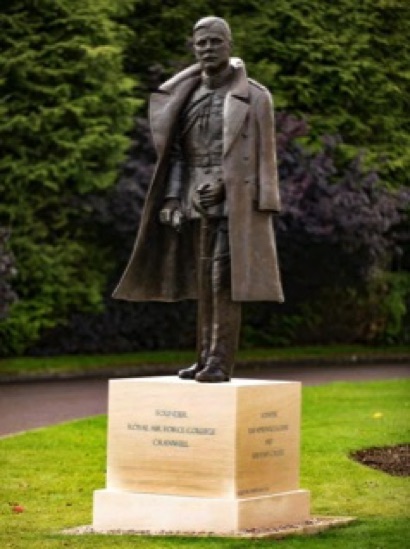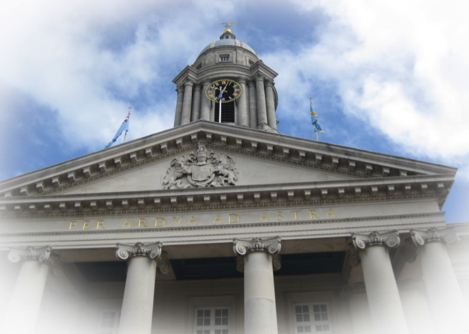The 7' high bronze statue was erected to commemorate the Father of the College which celebrated its centenary in 2020.
The Cranwellian Association raised the funds necessary to erect this fine statue and donations were made by both individuals and corporates.

OUTSIDE
• The foundation stone is to the left of the front doors
• The commemorative opening stone is to the right of the front doors
• The classical lines of the front of the College comprise a central portico of 6 Corinthian columns surmounted by a pediment, tower and dome.
• College Hall is now a Grade 2* listed building.
• The octagonal glass at the top of the 150ft tower has a flashing light and was irrevelentlynicknamed "Winking Willy".
• The balcony at the base of the tower has the College flag, RAF ensign and Commandant’s pennant flying from it and is known as "Admirals Walk" as a throwback to the days when Cranwell was an RNAS station.
• Above the main doors is King George V's Cipher and the College Coat of Arms
• Per Ardua Ad Astra is the RAF motto and means "Through Hardship Towards the Stars".
• The circle of grass in front of the College is known as "The Orange". This goes back to the time when an early pilot flew over it and remarked that it looked like an orange cut in half from the air.
• The avenues of Lime trees either side of The Orange were given by Sir Samuel and Lady Hoare. '
• The public road (Cranwell Avenue) splits the Station in two. South side was the location of the original College buildings and hutted accommodation. This is where fixed wing aircrew and mechanics were trained. Two of the original 1916/1917 hangars remain in use today.
• North Airfield was the location of the airship sheds (the Officers’ Married quarters are built on the airship sheds foundations.
• The current day main guardroom building was the railway station and terminus for the Sleaford to Cranwell railway.
The only damage to College Hall was when a Whitley bomber crashed into the western end, killing the three crew and causing much damage to the building. Pictures depicting this can be seen in the College library today.
The plaque cast in bell metal commemorates the gratitude of the College to the Shell group of companies who provided a peal of 6 chiming bells for the clock tower in 1952. At that time, Gp Capt Sir Douglas Bader was chairman of Shell Aviation. The bells were dedicated by the Bishop of Croydon in 1952. They strike the hours, strike the quarter hours and sound the retreat daily at 1800 in the summer and 1600 in the winter. When the Ensign and 'College Flag are lowered.


